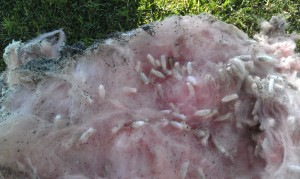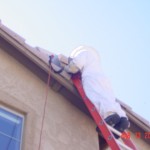The bees are coming! How do I know?
The weather has warmed up and we had a great deal of rain, that is going to equal a lot of bug. With the temperatures today in the high 80’s you can bet the Africanized Honeybee’s who swarm more often anyway are all ready making brood to divide the colony.
The hive mind decides on the event and all of a sudden the colony is at it’s maximun and they swarm. One-half or so of the colony depart in a frenzy, they may alight on a branch and then send scouts out to find a new home. Once located the Queen will check it out and if she is happy they will move into their new home.
Here are a few facts about the swarm:
- The bees will have taken on additional honey, typically they are more docile when full. But they might still sting, just less likely to become agitated unless they are defending their home. Swarm tend to be more docile!
- The old Queen moves with the new swarm, she is fertile and more likely to succeed in a new build. The honeycomb is difficult work, so the stress on the entire colony is BIG.
- The new Queen probably not yet fertile, she will take a mating flight after the swarm leaves. It is possible for her to become a free lunch for a bird or other insect, if she fails to return the old hive still has the ability to create a Queen from previous eggs.
- Africanized honeybees swarm up to 10x more then European Honeybees.





















